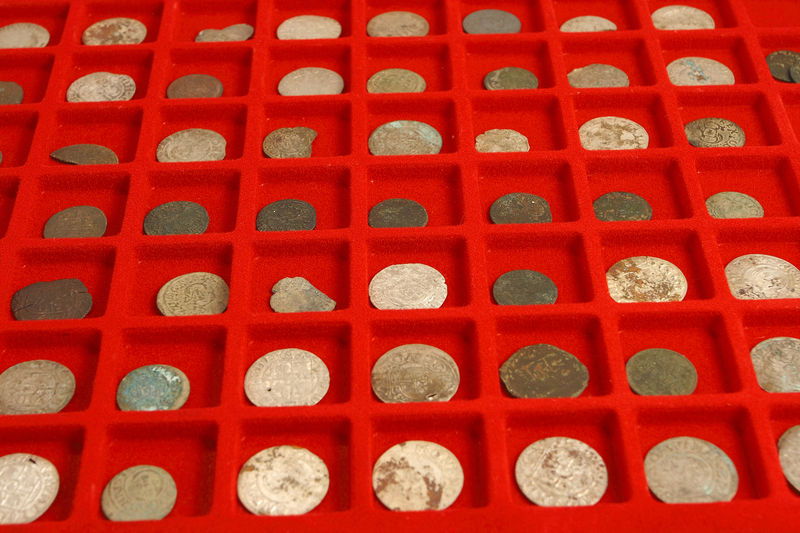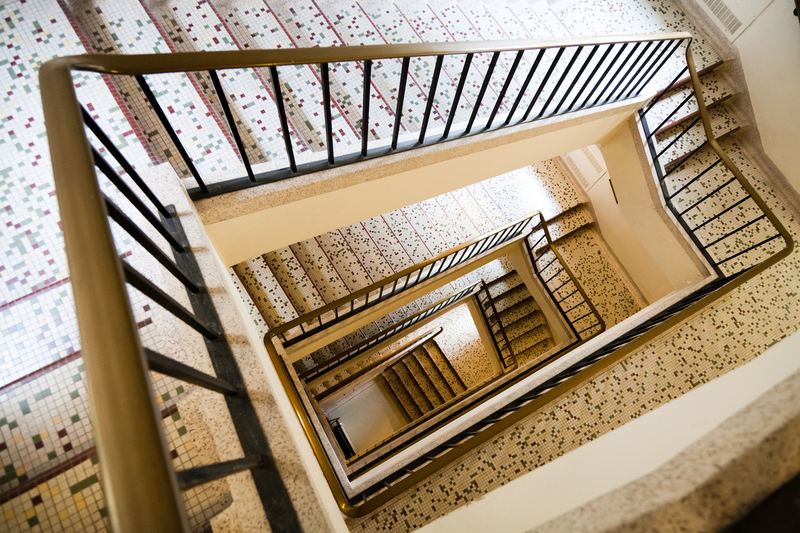The Complex Journey of Relocating Pianos: Professional Movers Needed
Posted on 29/05/2025
The Complex Journey of Relocating Pianos: Professional Movers Needed
Relocating a piano isn't simply picking up a piece of furniture and moving it from one room to another. It's a delicate, complex journey requiring not just physical strength but specialist knowledge, precision, and expertise. This is where professional piano movers step in, ensuring your prized instrument remains safe, sound, and melodious wherever it travels.
Why is Piano Moving So Challenging?
A piano is far more than a beautiful centerpiece or a musical outlet; it is a finely crafted, sensitive instrument composed of thousands of intricate parts. Moving such a delicate item comes with unique challenges, making the journey uniquely complex for several reasons:
- Weight and Size: Pianos can weigh anywhere from 300 to over 1,000 pounds, making them extremely difficult--and dangerous--to move without the proper skills.
- Shape and Structure: Their bulky, uneven shape, and vulnerable legs or casters add extra complexity.
- Internal Mechanisms: With over 10,000 moving parts, even a small jolt can cause internal misalignments requiring expensive repairs.
- Value: Many pianos hold immense sentimental and financial value, raising the stakes for the relocation process.
Simply put, piano relocation is a task best left to professional movers who specialize in this precision-demanding endeavor.

The Diverse World of Pianos
Understanding the variety of piano types underscores why relocation is never a one-size-fits-all process. Here are three predominant categories:
1. Grand Pianos
- Ranging from baby grands to concert grands, these instruments are long, heavy, and possess delicate legs and lid mechanisms.
Moving requires disassembly of the legs and careful crating.
2. Upright Pianos
- Though more compact, upright pianos are still severely heavy and carry weight concentrated in top sections, making them top-heavy.
Professional techniques are vital to prevent tipping or structural damage.
3. Digital and Electric Pianos
- These are typically lighter yet may have detachable parts, cords, and fragile electronics, demanding careful padding and secure packing.
Experts understand the best way to protect sensitive components for transit.
Common Dangers of DIY Piano Moving
Why not just gather some friends and muscle your piano out the door? Unfortunately, amateur efforts often lead to more harm than savings. Some of the most frequent risks include:
- Personal Injury: The immense weight and awkward balance can cause serious back injuries, crushed fingers, or more severe accidents.
- Instrument Damage: Dropping, banging, or even improper angling can irreparably damage the casing, keys, or internal mechanisms.
- Property Damage: Scratched floors, broken stair railings, and damaged walls are all-too-common with untrained movers.
- Emotional Distress: The stress of risking a beloved instrument can take a real toll on your wellbeing.
Considering these hazards, it's clear that engaging in DIY piano relocation can be a costly mistake. Professional piano moving specialists are well-equipped to mitigate these risks.
What Makes Professional Piano Movers Essential?
There's an art and science behind moving a piano properly. Let's explore exactly why professional piano movers are needed for the task:
Specialized Equipment
- Piano Dollies and Skid Boards: Designed to distribute weight evenly and enable easier maneuvering over various surfaces.
- Padded Blankets and Straps: Protect the piano's finish and prevent movement during transport.
- Ramps and Hoists: For multi-story moves, these tools are used to safely negotiate stairs or load pianos onto trucks.
Trained Personnel
- Experience matters! Expert movers understand the structural weak points of each type of piano, allowing them to handle, lift, and transport with precision.
- Team Coordination: Proper communication and planning ensures that every member knows their role during the move.
Pre-Move Planning
- Site Assessment: Professional movers evaluate the path, measure doorways, and plan routes before touching the instrument.
- Customized Approach: Every move is unique, requiring tailored solutions for potential complications (tight corners, narrow stairs, or elevator limits).
Insurance and Liability
- Comprehensive Coverage: If the unexpected happens, specialized piano moving companies provide insurance for peace of mind.
- Accountability: Licensed movers are held to a legal standard of care unavailable with casual or DIY options.
Simply put, engaging certified piano relocation professionals is the smartest way to protect your investment and your safety.
Step-by-Step: The Professional Piano Moving Process
Curious about what a professional piano moving journey looks like? Here's a comprehensive breakdown, so you know what to expect:
- Initial Consultation: The company assesses your specific piano and environment (includes measurements, hazard review, special requests).
- Preparation and Disassembly: Where needed, movers remove piano legs, pedals, or music stands and secure lids or fragile parts with padding.
- Packing and Protection: The instrument is wrapped in heavy-duty blankets, shrink-wrap, and secured with professional straps to avoid shifting.
- Loading and Transportation: Movers use dollies or hoists to load the instrument onto a climate-controlled truck, anchoring it to avoid vibrations or knocks.
- Unloading and Placement: Upon arrival, the process is reversed with attention to correct placement and reassembly. Skilled tuning may be recommended afterward.
No shortcuts here--the entire process is methodical and thorough, built around safety and piano integrity.
How to Choose the Right Piano Moving Company
Hiring a piano moving specialist is an important decision. Keep these factors in mind for a safe and seamless experience:
- Experience: Years of dedicated piano moving experience indicate familiarity with potential challenges.
- Reputation: Read reviews, request references, and check ratings from trusted sources.
- Credentials: Ensure they are licensed, insured, and trained specifically for piano relocation.
- Service Range: Do they move both locally and long-distance? What limitations do they have?
- Value and Pricing: Get detailed quotes and beware of suspiciously low offers that may cut corners on care or insurance.
Quality piano moving services blend technical know-how, respect for your instrument, and top-tier customer service.
Preparing Your Piano for the Move
While professionals handle the heavy lifting, there are several ways you can prepare your piano for relocation to ensure an optimal experience:
- Remove all loose items from the piano (music books, decorative objects, etc.).
- Inform your movers about stairs, tight spaces, or any unusual obstacles in advance.
- Clear pathways in your home to provide easy, unobstructed access to the instrument.
- Arrange for children or pets to be elsewhere during the move for safety.
The Importance of Post-Move Piano Care
- Tuning After Relocation: Pianos often require professional tuning after a move due to internal shifts during transport.
- Climate Adjustment: Allow your instrument to acclimate to its new home to avoid issues with humidity and temperature changes.
- Inspection: A post-move inspection by a technician can spot issues before they escalate into costly repairs.
Long-Distance and International Piano Moving
Relocating a piano across the country--or even internationally--demands even more expertise, especially when dealing with variable climates, extended transit times, and international regulations. Long-distance piano movers use climate-controlled vehicles, professional-grade packing, and advanced tracking systems to deliver your piano safely to its faraway destination.
For international moves, compliance with customs, wood treatment laws, and special crating may be necessary. The right professionals handle the red tape, so you don't have to.
Sustainable Piano Moving: An Emerging Priority
As sustainability becomes more important, some professional piano movers are adopting eco-friendly practices:
- Recycled and reusable packing materials to lessen environmental impact.
- Fuel-efficient vehicles and optimized routes to save energy.
- Donation or responsible disposal of unrepairable pianos to reduce waste.
By choosing a mover with a green commitment, your piano's journey can benefit the planet as well as your household.

Frequently Asked Questions (FAQs) About Piano Moving
Can any moving company handle a piano?
No, not every mover is qualified. Look for companies with specific expertise, training, and equipment for piano transportation.
How much does professional piano moving cost?
Pricing depends on factors like size, distance, obstacles, and required services. Upright and grand pianos have different rates. Always request a personalized quote.
How long does it take?
A local move can be completed in a few hours, whereas long-distance or international relocation will take longer, factoring in prep, transit, and placement time.
Do I need to re-tune my piano after a move?
Yes, tuning post-relocation is strongly advised, as environmental changes and vibrations in transit affect sound quality.
Conclusion: Trust the Experts with Your Piano Move
Whether your piano is an heirloom with generations of history, a budding family treasure, or a professional concert instrument, its safe relocation demands more than brute strength. The intricate art of piano transport requires highly trained, well-equipped, and insured professionals who understand the value and vulnerability of these unique musical masterpieces.
By entrusting your piano moving journey to seasoned specialists, you safeguard the instrument's tone, appearance, and long-term performance--ensuring that, wherever the music takes you next, your piano will remain your instrument of inspiration.
When it comes to relocating your piano, remember: professional movers are not a luxury; they are a necessity for every safe, seamless journey.














